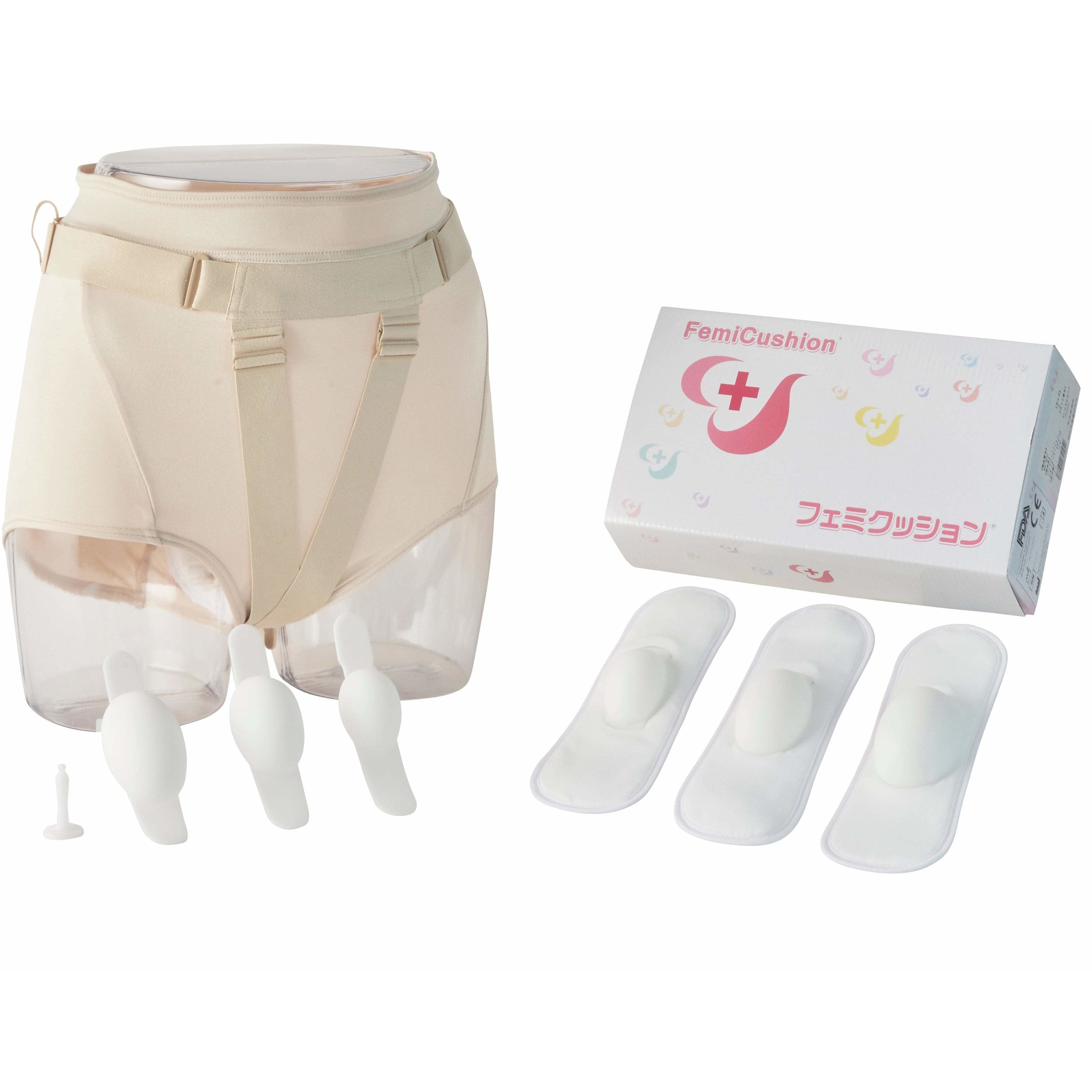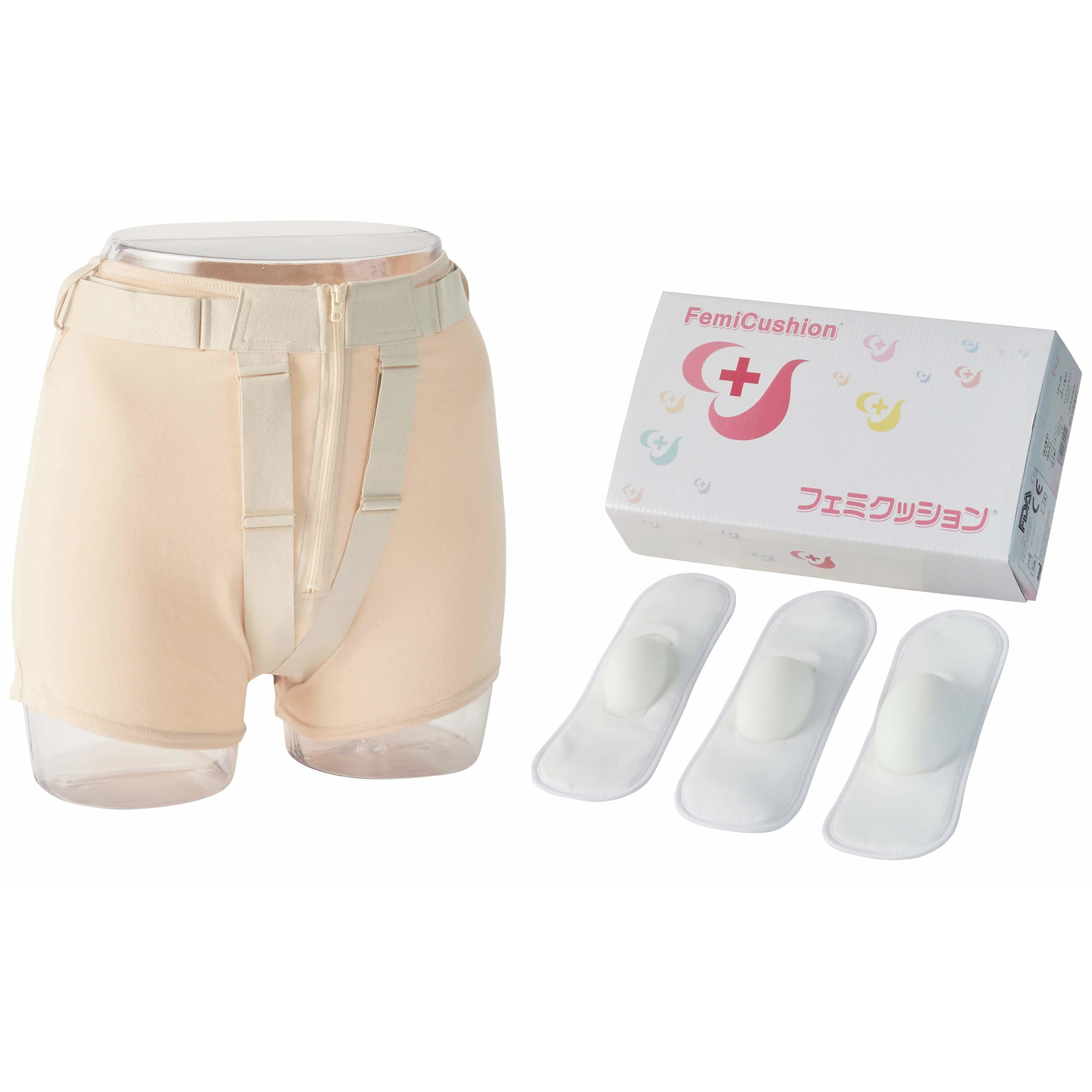The Pros and Cons of Pessary Use for Prolapse
Table of Contents

What is a Pessary?
Most women have never heard of a pessary until one day, your doctor recommends it. There are different types of pessaries that are used to treat different conditions and problems. For example, a ring pessary as a way to treat prolapse symptoms. A pessary is a prosthetic medical device that is inserted into the vagina for for support pelvic organs, deliver medications vaginally or prevent pregnancy.
Pessary Medications
These pessaries deliver medication directly into the vagina using a small, solid device. Unlike therapeutic pessaries used for mechanical support in pelvic organ prolapse, pessary medications are primarily used to treat various vaginal conditions. Here's an overview:
Types of Pessary Medications:
- Antifungal Pessaries: Used to treat vaginal yeast infections (candidiasis). Common medications include clotrimazole, miconazole, and econazole.
- Hormonal Pessaries: Often contain estrogen and are used to treat symptoms of vaginal atrophy, dryness, and discomfort, particularly in postmenopausal women.
- Antibacterial Pessaries: Used to treat bacterial infections such as bacterial vaginosis. Medications include metronidazole and clindamycin.
- Anti-inflammatory Pessaries: Used to reduce inflammation and treat conditions like vaginitis.
Uses:
- Infections: Treats yeast infections, bacterial vaginosis, and other vaginal infections.
- Hormonal Therapy: Provides local hormone replacement therapy for menopausal symptoms.
- Inflammation: Reduces inflammation and irritation in the vaginal area.
Occlusive Pessaries
Therapeutic Pessaries
These are the most well known type of pessaries. They are used to prevent organs from sinking down further into the vaginal canal and causing painful symptoms such as abdominal discomfort and urinary incontinence when diagnosed with pelvis organ prolapse. Pessaries are a common solution prescribed by many doctors. While some women are able to use pessaries with ease, others cannot due to a variety of conditions. These are the main type of pessaries that we will discuss in this article.
The Pros of Pessaries
Compared to surgery, pessaries provide a cheaper and less intensive alternative. It can be inserted by a healthcare professional and maintained by the individual.
Delay Surgery
Surgery is an option many wish to avoid, and pessaries can assist women in delaying or avoiding surgical procedures. It provides less risk for women who are physically unable to endure surgery.
Variety
There are numerous types of pessaries with different purposes, such as ring pessaries, Gehrung pessaries, and shelf pessaries. Depending on the severity and type of symptoms, there are numerous options to choose from.
Types of Pessaries
As mentioned previously, pessaries comes in different shoes and sizes. See below for the list of different pessary types and their characteristics.
Ring Pessary: The most common type and is usually the first type of pessary that women gets fitted with. Suitable for all types of prolapse.
Gehrung Pessary: Can be molded and bent to fit different bodies. It is used for cystocele, rectocele and /or uterine prolapse in mild to severe cases.
Donut Pessary: This pessary is used to occupy space for all types of prolapse in moderate to severe cases. Donut pessaries are hard to remove and needs to be taken out before having intercourse.
Cube Pessary: Also a space occupying pessary that sticks to the vaginal wall with curved edges of the device. It has a plastic loop that is attached to the device similar to a tampon string for the removal process. A cube pessary is also difficult to remove but requires daily removal for cleaning and maintenance. Suitable for all types of prolapse in moderate to severe cases.
Gellhorn Pessary: A space occupying pessary that is suitable for all types of prolapse in moderate to severe cases. A forceps is require for the removal of this pessary and it is difficult to insert and remove.
Inflatable Pessary: Available in a ball or donut shape design. It is inflated inside the body once in position using a hand held pump. Easy to Insert and remove compared to other space occupying pessaries.
Shelf Pessary: Designed with a curved stem in the middle of a kidney shaped base plate to support more advanced stages of prolapse.

The Cons of Pessaries
While pessaries do have advantages, there are many problems associated with them as well.
Varying Success Rate
Success rates depend on various factors, but a study in the International Urogynecology Journal noted that 41-74% of women were able to find relief with pessaries. In some situations, less than half of the women using pessaries were able to find comfort due to their condition. Even at the highest success rate levels, 1 in 5 women were unable to achieve relief with a pessary inside their body.
Not suitable for all women
Many women have physical conditions where a pessary cannot be inserted in the first place. Conditions like lichen scelrosus prevent women from treating their prolapse symptoms with pessaries. Women who have prolapse after a hysterectomy also find difficulty keeping the pessary inside the body.
Must be replaced frequently
As pessaries can easily become dislodged or cause internal pain, it may be necessary to repeatedly return to the doctor to have one fitted. Since pessaries are available in many shapes and sizes, some women may need to try different versions in order to find the one that best suits them.
Difficulty with sexual intercourse
Patients have noted that pessaries can cause discomfort during sexual intercourse. Some women remove them beforehand, which is inconvenient depending on the type of pessary inserted. A notable degree of self-maintenance is important in order to maintain both a pessary and a healthy sex life.
Pessary Procedure Details
Here general overview of the procedure details for pessaries.
Insertion
-
Preparation: Wash your hands thoroughly with soap and water. It’s helpful to use a water-based lubricant to make insertion easier and more comfortable.
-
Positioning: Choose a comfortable position for insertion, such as lying on your back with knees bent or standing with one foot elevated.
-
Insertion: Gently fold the pessary and insert it into the vaginal canal. Aim to position it high enough so that it supports the pelvic organs but is comfortable. You may need to adjust the pessary slightly to ensure it is properly positioned.
-
Check Placement: After insertion, check to make sure the pessary feels secure and is not causing any discomfort. It should not slip out or feel overly tight.
Removal
-
Preparation: Again, wash your hands thoroughly. You might want to use a lubricant to ease the removal process.
-
Removal: Relax and gently pull on the pessary using the small loop or handle, if present. If the pessary does not come out easily, try to relax your pelvic muscles or use a bit more lubricant.
-
Inspection: Once removed, inspect the pessary for any signs of wear or damage.
How to Care for Pessaries
Caring for pessaries, involves a few essential steps to ensure their effectiveness and maintain hygiene. Depending on your doctors, the pessary may been to be cleaned daily or weekly. Always follow your provider's specific guidelines for cleaning and care, as they can offer personalized advice based on the type of pessary and your individual needs.
First, it’s important to clean the pessary with mild soap and water, avoiding harsh chemicals or antibacterial soaps that could irritate the vaginal tissues. After washing, thoroughly rinse the pessary to remove any soap residue and let it air dry completely. Regularly inspect the pessary for any signs of wear or damage, such as cracks or discoloration, and replace it if necessary. Additionally, schedule regular follow-up appointments with your healthcare provider to ensure proper fitting and to address any concerns. Proper storage in a clean, dry place when not in use is also crucial to prevent contamination.

Example of Pharmaceutical Pessaries
- Focus on Treatment: Emphasize that these pessaries deliver medication directly to the vaginal area, targeting specific conditions.
- List Common Conditions: Clearly list the conditions treated, such as yeast infections, bacterial vaginosis, and vaginal atrophy.
- Mention Medication Types: Briefly mention common medications used, such as antifungal agents (clotrimazole, miconazole), antibiotics (metronidazole, clindamycin), and hormones (estrogen).
- Highlight Benefits: Briefly mention the benefits of direct medication delivery, such as reduced systemic side effects compared to oral medications.
Example of Occlusive Pessaries
- Focus on Contraception: Clearly state that occlusive pessaries are primarily used as a form of contraception.
- Explain Mechanism of Action: Explain how they act as a physical barrier to prevent sperm from entering the uterus.
- Mention Cervical Caps: Specifically mention cervical caps as the most common type of occlusive pessary.
- Discuss Spermicide Use: Briefly mention the use of spermicide in conjunction with occlusive pessaries to enhance effectiveness.
No Pessary? No Problem
For women who are not suitable for pessary use of is comfortable with having a device inserted into their body, FemiCushion provides safe and effective prolapse relief. Unlike pessaries, nothing goes inside the body. Instead, FemiCushion uses a soft and flexible silicone cushion to provide support to the prolapsed organ and hold prolapsed organs inside the body thus prevents them from bulging from the vagina. Over time as organs stay inside the body, prolapse symptoms are greatly reduced, allowing women to return to a normal and active lifestyle.
Is Using a Pessary a Wise Decision for You?
Using a pessary as a form of medical treatment is a decision that requires careful consideration and consultation with healthcare professionals. While it can be effective in alleviating symptoms and improving the quality of life for some individuals, it may not be suitable for everyone. Factors such as overall health, anatomical considerations (shortened vagina, wakened pelvic floor muscles, vaginal scarring), and personal preferences should be taken into account. Therefore, before opting for a pessary, it is essential to undergo a thorough medical evaluation and have an open discussion with a qualified healthcare provider to determine if this intervention is the right and wise choice for one's specific condition and needs.
Factors to consider for pessary use:
- Have time and commitment to care for the pessary everyday. This includes, removing, cleaning, and inserting the pessary.
- Have access to a health professional very few months for check up and possible vaginal washing.
- During sexual intercourse, the pessary may have to be taken out.
- Know that pessaries have varying success rates and not all women are suitable for pessary use.
Is Using a Pessary a Wise Decision for You?
While pessaries can provide relief for many women, they also come with potential drawbacks. If you're seeking a more comfortable and less invasive option, consider Femicushion. Designed to support your pelvic floor without causing discomfort, Femi Cushion may be a better fit for your needs.
About FemiCushion
FemiCushion consist of three main components, the supporter, the holder, and the cushion. The supporter comes in different sizes and styles. Sizing is based on waist measurement. For more information, please see our sizing guide. We offer three different styles of supporter to cater to different lifestyles and preferences. Here is a supporter style guide to help you choose. On all supporters, there are horizontal and vertical straps that can be adjusted to fit different body shapes and control the level of prolapse support. The more the vertical straps are tightened, the more the device will be lifted against the body providing sturdy support. The holder is what keeps the cushion secured to the supporter. Not only does it keep the cushion in place but it also functions to absorb any liquid or discharge that is common in pelvic organ prolapse. The cloth holder is absorbent but it is made with special technology fabrics that will keep the surface layer dry for comfortable wear. The most important component is the cushion. The cushion comes in three sizes, small, medium, and large for different severity of prolapse stages and vaginal openings. It is made with a soft silicone material that is safe to use for the body. The cushion will conform to the shape of the body making it comfortable and secure.
Our site is filled with information about how FemiCushion gives women comfort and support. Start your journey today.
Disclaimer
The information on this site is not intended or implied to be a substitute for professional medical advice or diagnosis. All content, including text, graphics, images, and information, contained on or available through this website is for informational purposes only.
Supervising Doctor of This Article

Koichi Nagao, MD PhD
Professor, Department of Urology, Toho University Faculty of Medicine
Director of Urinary tract reconstruction center, Toho University Omori Medical Center
Director of Reproduction Center, Toho University Omori Medical Center
Professor Nagao specializes in plastic surgery in the field of reproductive medicine. He completed eight years of plastic surgery training at Showa University before majoring in urology at Toho University. With his meticulous surgical techniques and careful examinations that combines urology and plastic surgery, Professor Nagao became a Board Certified Specialist with multiple associations including the Japanese Urological Association, the Japan Society for Reproductive Medicine, and the Japanese Society for Sexual Medicine.
The suggested Products

FemiCushion EasyOpen Deluxe Kit
$299.99

FemiCushion Standard Deluxe Kit
$299.99

FemiCushion Lite Kit
$249.99




